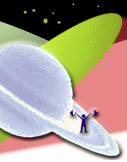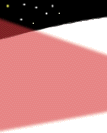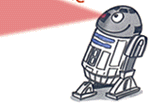





-- THINGS
 |
 |
 |
  |
 -- THINGS
|
Editors |
Exact layout [that's why you might need a calculator] is only achieved with an editor. That's my opinion. The decision whether to use a graphical based tool, or work with a text editor, depends on whether you are a more visual person or not. Choosing graphical-based software to build web pages [in case you just don't like typing] is fine, just make sure the software doesn't write extra code into the source text. Because many webdesign applications do. |
||
| Platforms | Test
layouts not only with different browsers - but also on different platforms. Windows 95/98/NT,
find somebody with a Mac - and test on Unix related systems. I suffered a major nervous
breakdown (short, but major) when I looked at my pages with a newly installed Linux
system/ Netscape Browser. What a mess. Don't assume the entire planet uses Microsoft
products. It's simply not the case. Especially check fonts. |
||
| Fonts | Fonts on Windows
machines versus Mac will vary - not to your delight. Any font on a Mac shows smaller: there is one possibility
to avoid this: use style sheets. Link a style sheet to your pages and define font sizes for headers, paragraphs etc. with pixels (px), not with points (pt) or similar. The fonts on Mac understand pixels. However, now you imply all surfers stumbling across your pages have a browser which understands style sheets. There's always a downturn. |
||
| Page sources | The setup
of a page is good and you want to know how it's done? Copying the source [View: page
source in the browser menu] into a text editor and deleting all the content except table, break
and paragraph tags will help to find out. There is no need to reinvent the wheel when other
bright minds have found a good solution you want to alter. |
||
| Tables 1 | Concerning
graphics tables are unbeatable: you can glue divided graphics back together again - without
losing a pixel in between. This is not possible across frames, not all browsers support
it. |
||
| Tables 2 | Tables
can [also] be placed next to each other without losing space in between by putting
"align=left" into the table tag. One can already look at the content of the first
table on a page while the second table is still loading. One single table containing all
graphics and text [not to mention music or videos] can take a very long time
to load. |
||
| Tables 3 | Tables
placed beneath each other only glue together when no break tag is placed between them. Centred
tables with fixed width can achieve good layout with each table being able to have different
table division widths. |
||
| Frames 1 | Frames are
great for simple documentation sites. However, Netscape adds one single pixel to the outside
of each frame. Plus, the frame itself changes width (slightly) when you resize the browser to
full screen size. Should you place menu buttons or text in a fixed-width-frame, define that
frame a little wider than you think is necessary (approx. 5-10 pixels). Otherwise text might break
and buttons disappear halfway. |
||
| Frames 2 | Search engines index a complete site. Also single pages which are actually
part of a frame layout. People might find a single page instead of the homepage with the frameset. It can be helpful
to have a tiny "home" reference somewhere on every single page. Those fortunate
enough to find this single page will have quick access to the (of course much more appealing)
framesetted site. |